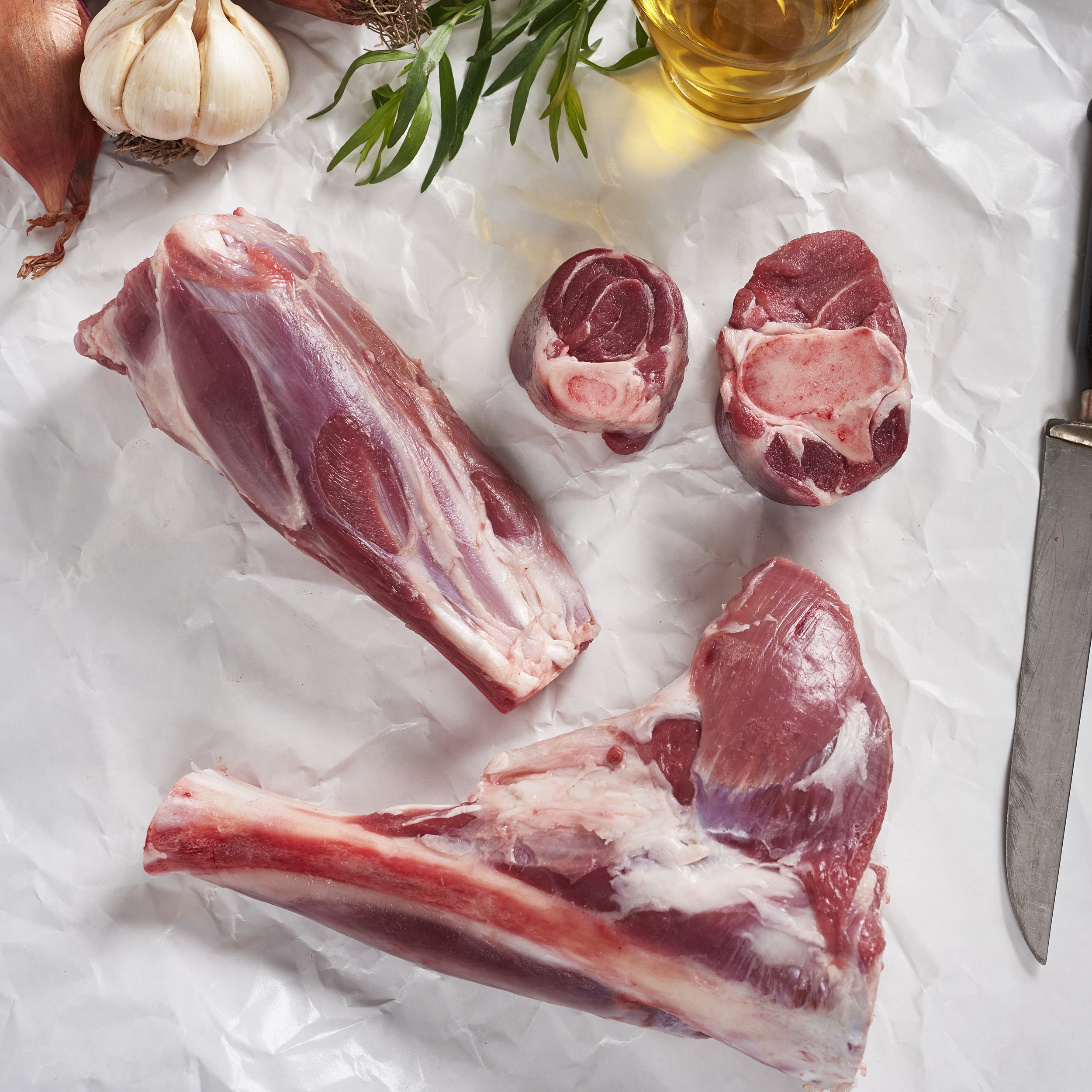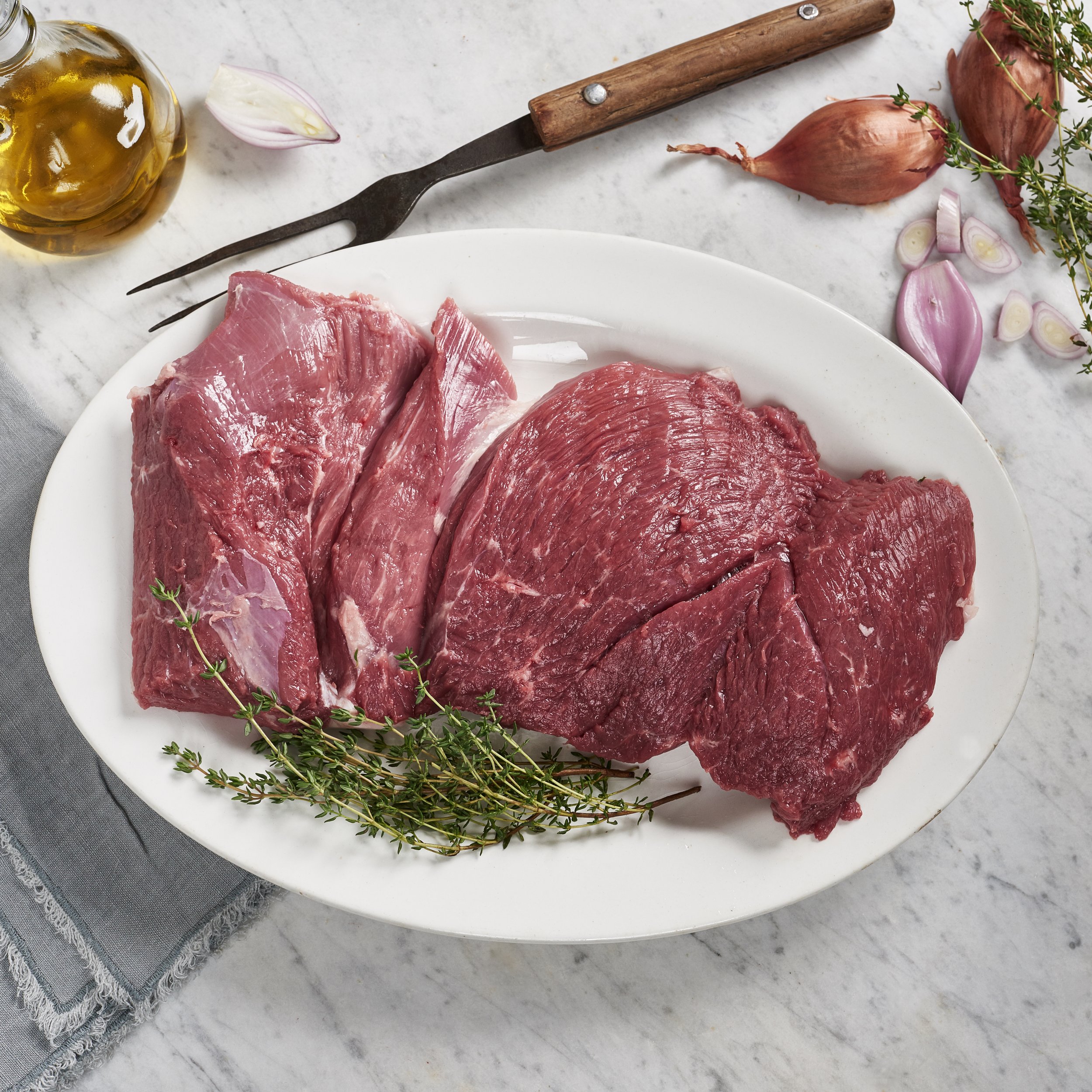Cooking Questions & Answers: Pork Belly, Split Lamb Shanks, Leg of Lamb, and Grass-Fed Steaks
Getting tagged on social media is a new joy right now. It’s amazing to see how much cooking you’ve been doing. We’re cooking constantly, too. If we can’t share a meal, at least we have this connection. Thanks to those of you who have been reaching out when you have a question as you shop, prep, and make what you’ve been buying. We love reading your questions and talking about how best to answer them. It’s interesting to know what’s tripping you up and what you want to get better at making. Some of the latest questions that have made their way through our Q&A questionnaire form are below. More than a few of you want to know what to do with pork belly. One customer wrote asking how to prepare split lamb shanks, which is actually one of Josh Applestone’s favorite cuts to make. Below are our answers. Keep sending your questions — and please keep tagging us in your photos. We really love seeing your dishes.
QUESTIONS & ANSWERS
Question: How do you cook pork belly?
A: This is such a good question and we have so many ways to answer it. Mainly it depends on how you like to eat pork belly. You could grill it -- here’s our recipe for doing just that. We like to serve it with grilled peaches flavored with chili and lime—a great compliment to that fatty belly. You could also braise it. We like to take braised belly, cut it in strips, fry them, and serve over ramen. With pork belly, the possibilities are endless.
Lamb Shanks
Question: How should I prepare the split lamb shanks you occasionally stock? It's one of my favorite cuts but I've never seen it split this way.
A: Split lamb shanks are a Josh Applestone favorite. He cooks them in a pan on a grill -- gas or charcoal, it doesn’t matter. Indirect heat is the key factor here. He puts them in a French steel pan with potatoes, onions, carrots, olive oil, and salt, then leaves them over indirect heat for two or three hours. The result is caramelized and delicious. The marrow runs out and bastes everything. For more specific details, check out the summer grilling edition of our blog series “Ask the Butcher” where he describes this method.
Boneless Leg of Lamb
Question: How do I cook a boneless leg of lamb so that it is a little charred on the outside but still a little pink on the inside? If you have a great recipe to share, I would love to hear about it.
A: That’s pretty much the ideal grilled boneless leg of lamb experience you’re describing right there. We do happen to have a great recipe we always turn to. It's from our book, The Butcher's Guide to Well-Raised Meat, and involves an Indian-style spice rub. If you prefer other flavors, choose them. Just remember, lamb is fatty meat, so beware of flare-ups. To keep that perfect balance of char to pink you’re looking for, always watch your meat closely, and move it to the top rack of your grill if you feel that it is getting done too fast or runs the risk of burning.
Question: Hi, I need help with cooking steak. My wife cooked grass-fed filets under the broiler and they were good. I tried to cook grass-fed strip steaks in a cast iron pan and they didn't come out good at all. I put salt and pepper on the steaks and had butter in the pan. Is there another cut of steak to try? Should I use the broiler for this, too? We typically like our steaks to the well-done side of meat. Any suggestions? Thanks for being willing to help.
A: Grass-fed beef has very little fat. It’s super lean. Don’t salt it before cooking. Both salt and heat, and that includes cooking it to well-done, can really draw out the moisture it does have. You can add salt (and pepper) for taste after, not before. Grass-fed is easy to overcook in a broiler that is close to a flame or in a pan. If you like to eat your meat medium to well done, try cooking grass-fed steaks low and slow in the oven. Set your oven to 250 degrees and put a steak in for about 30 minutes, slow basting it with olive oil. Slow cooking at low heat will allow it to retain cellular structure without beating it up.


